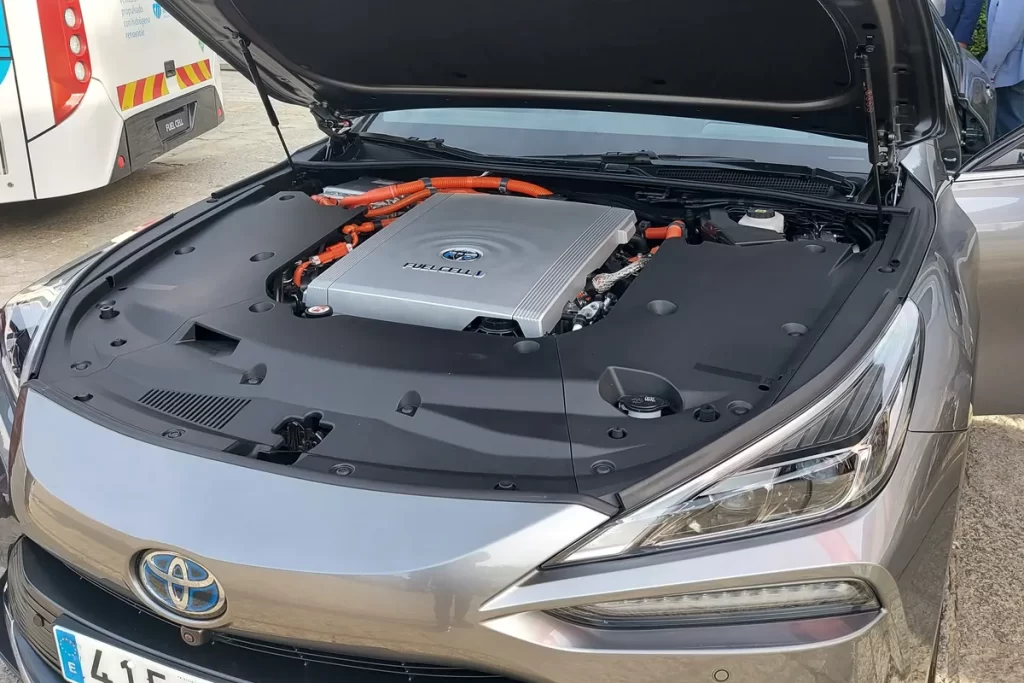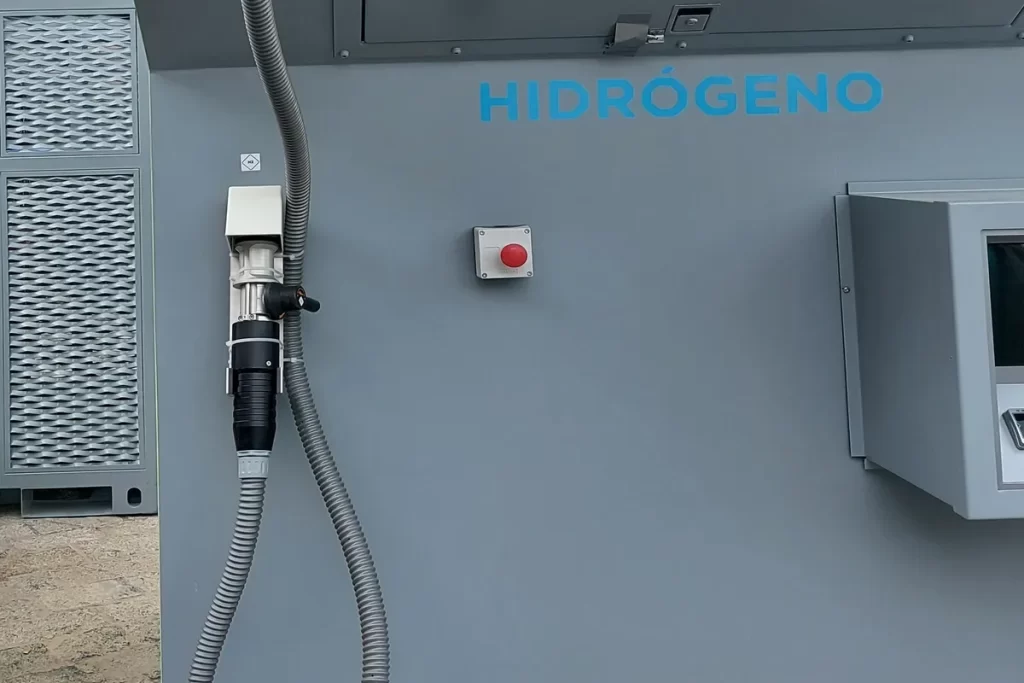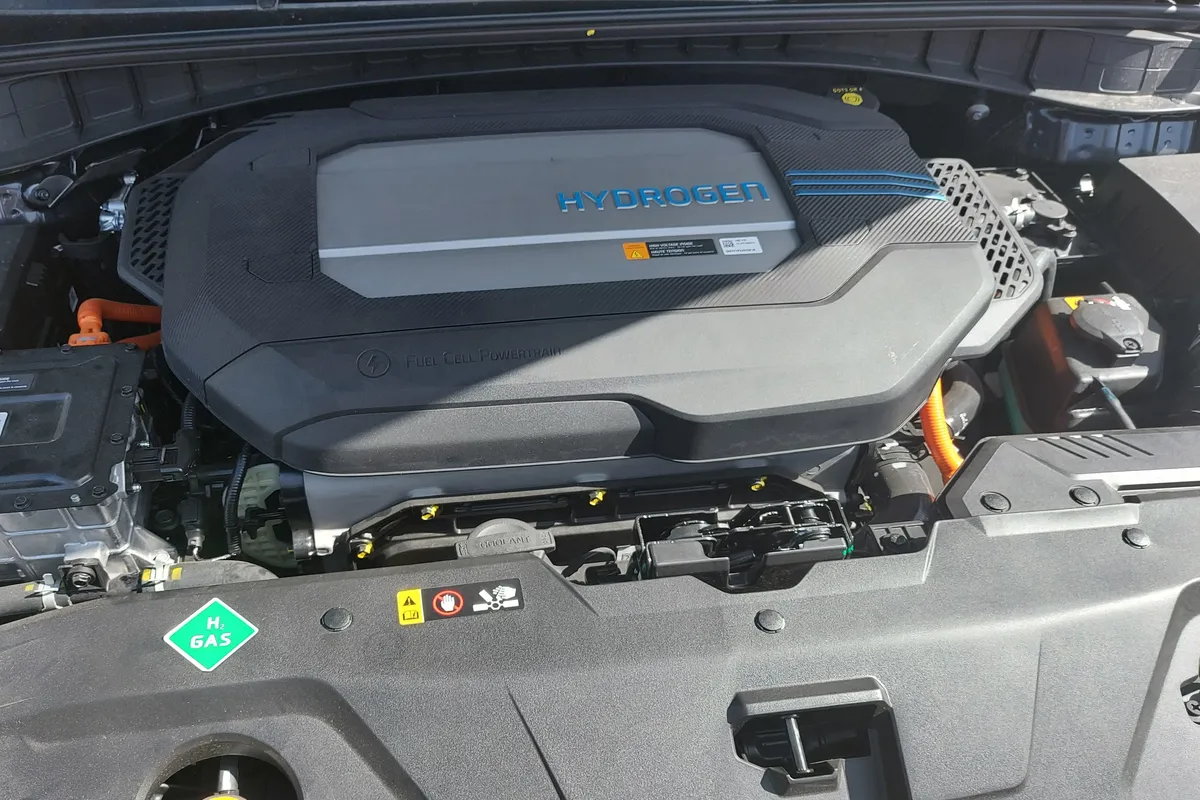Fuel Cell Electric Vehicles (FCEVs) are a type of electric vehicle that generate electricity using a fuel cell powered by hydrogen rather than storing energy in a battery like traditional Battery Electric Vehicles (BEVs).
Fuel cell electric vehicles (FCEVs) are gaining attention as an eco-friendly alternative to traditional internal combustion engine vehicles. They offer the potential to reduce greenhouse gas emissions and decrease our reliance on fossil fuels. In this article, we will explore the technology behind FCEVs, their advantages and challenges, and their potential role in the future of transportation.
Fuel Cells in Electric Vehicles
Fuel cells have emerged as a promising technology for powering electric vehicles. They provide a clean and efficient way to convert chemical energy into electrical energy, allowing for extended driving ranges and reduced refueling times. In this section, we will explore the different types of fuel cells used in electric vehicles and explain how they work.
Types of Fuel Cells Used in Electric Vehicles
There are various types of fuel cells, but two primary ones are commonly used in electric vehicles:
- Proton-exchange membrane fuel cells (PEMFCs): These fuel cells are the most commonly used in electric vehicles due to their high power density, low operating temperature, and quick startup time. PEMFCs utilize a polymer electrolyte membrane that allows protons to pass through while blocking electrons [1]. This results in a voltage difference and the generation of an electric current. PEMFCs operate at relatively low temperatures (around 80°C) and are compact, making them suitable for use in passenger vehicles and light-duty vehicles.
- Solid oxide fuel cells (SOFCs): SOFCs operate at much higher temperatures, typically between 800°C and 1,000°C [2]. They use a solid ceramic electrolyte and can utilize a variety of fuels, including hydrogen, natural gas, and methanol. While SOFCs are highly efficient, their high operating temperatures make them less suitable for passenger vehicles. Instead, they are more commonly used in stationary power generation or heavy-duty vehicles like buses and trucks.
How Fuel Cells Work in Electric Cars
Fuel cells convert chemical energy into electrical energy using hydrogen as a fuel source. The basic process involves the following steps:
- Hydrogen supply: Hydrogen is stored in high-pressure tanks within the vehicle. The hydrogen is then fed into the fuel cell stack, where it enters the anode side of the fuel cell.
- Oxygen supply: Air, containing oxygen, is drawn into the fuel cell stack and directed towards the cathode side. The oxygen is necessary for the electrochemical reaction that takes place within the fuel cell.
- Electrochemical reaction: In the anode, hydrogen molecules are split into protons (hydrogen ions) and electrons. The protons pass through the electrolyte membrane, while the electrons are forced to travel through an external electrical circuit, generating electricity. On the cathode side, the protons combine with oxygen and the electrons, forming water as a byproduct.
- Power generation: The electricity generated by the fuel cell stack is used to power the vehicle’s electric motor, which in turn drives the wheels. The only emissions produced by this process are water vapor and heat.
Fuel cells can achieve high efficiency levels, often between 40% and 60%, which is significantly higher than traditional internal combustion engines [3]. This increased efficiency results in lower fuel consumption and reduced greenhouse gas emissions. Additionally, fuel cell electric vehicles can offer driving ranges similar to or even greater than gasoline-powered vehicles, making them an attractive option for long-range travel.
One of the primary benefits of FCEVs is their quick refueling time, typically taking only a few minutes, similar to traditional gasoline or diesel vehicles. This advantage addresses the range anxiety and long charging times associated with battery electric vehicles.
Examples of Fuel Cell Vehicles
As the demand for more sustainable and eco-friendly transportation options grows, several automakers have developed fuel cell electric vehicles (FCEVs). These vehicles showcase the potential of hydrogen fuel cell technology in the automotive industry. In this section, we will discuss three popular fuel cell vehicles currently available in the market.
1. Hyundai Nexo
The Hyundai Nexo is a dedicated fuel cell electric vehicle that offers a sleek design, advanced safety features, and impressive performance. Powered by a 120 kW fuel cell stack, the Nexo boasts a driving range of approximately 370 miles (609 km) on a single tank of hydrogen [4]. The vehicle features a regenerative braking system, which helps extend its range by capturing energy during deceleration. Additionally, the Nexo’s fuel cell system operates efficiently in various weather conditions, including cold temperatures, providing reliable performance.
2. Toyota Mirai
The Toyota Mirai is a pioneering fuel cell vehicle that has been in production since 2014. The second-generation Mirai, launched in 2020, offers improved performance, design, and efficiency. Equipped with a 134 kW fuel cell stack, the Mirai has a driving range of around 404 miles (650 km) on a single hydrogen fill-up [5]. The vehicle’s stylish design, comfortable cabin, and advanced safety features make it an attractive choice for those seeking a zero-emission driving experience. Toyota has been actively promoting the development of hydrogen refueling infrastructure and aims to continue expanding the Mirai’s market presence.

3. Honda Clarity Fuel Cell
The Honda Clarity Fuel Cell is another notable example of an FCEV, offering a sophisticated design, spacious interior, and smooth driving experience. Powered by a 103 kW fuel cell stack, the Clarity has an EPA-estimated driving range of approximately 360 miles (579 km) on a full tank of hydrogen [6]. The Clarity also features advanced safety technologies, such as the Honda Sensing suite of driver-assistance systems. In addition to its fuel cell version, Honda also offers plug-in hybrid and battery electric variants of the Clarity, showcasing the brand’s commitment to providing a range of eco-friendly vehicle options for consumers.
Fuel Cells vs. Traditional Electric Vehicles (EVs)
Fuel cell electric vehicles (FCEVs) and traditional battery electric vehicles (BEVs) each have their own set of advantages and disadvantages. FCEVs are known for their longer driving range and faster refueling times, making them more suitable for long-distance travel and heavy-duty applications. On the other hand, BEVs excel in urban environments and short-distance travel, where their energy efficiency is maximized. Additionally, BEVs currently benefit from more widespread charging infrastructure compared to FCEVs.
Tesla and Fuel Cell Technology
Tesla has focused on battery electric technology for its vehicles, with no current plans to develop fuel cell vehicles. Elon Musk, Tesla’s CEO, has been critical of hydrogen fuel cell technology, referring to it as “fool cells” and emphasizing the inefficiencies in hydrogen production and storage compared to battery technology [7]. Tesla’s success with battery electric vehicles has led to significant advancements in battery technology and charging infrastructure, setting a high benchmark for other automakers.
Will Fuel Cells Replace Electric Cars?
While FCEVs offer certain advantages over BEVs, it is unlikely that they will entirely replace electric cars. Instead, the two technologies will likely coexist, catering to different market segments and use cases. FCEVs may find a niche in long-range, heavy-duty transportation, where their longer driving range and faster refueling times offer significant benefits. Meanwhile, BEVs will continue to dominate in urban environments and for shorter-distance travel, where their energy efficiency and well-established charging infrastructure are advantageous.
Comparing the Efficiency of Fuel Cell Electric Vehicles and EVs
The efficiency of FCEVs and BEVs varies depending on driving conditions and use cases:
- FCEVs are generally more energy-efficient at longer distances and higher speeds, as their fuel cells maintain a consistent level of efficiency across various driving scenarios.
- BEVs tend to be more energy-efficient in urban settings and for short-distance travel, where their regenerative braking systems can effectively capture and reuse energy.
The Difference Between EVs and FCEVs
The main difference between EVs and FCEVs lies in their energy storage and conversion methods:
- EVs store energy in batteries, which are charged using external electricity sources. This stored energy is then used to power an electric motor, which drives the wheels of the vehicle.
- FCEVs generate electricity on board through a chemical reaction between hydrogen and oxygen in a fuel cell stack. This electricity is used to power an electric motor as well, propelling the vehicle forward. In FCEVs, hydrogen is stored in high-pressure tanks within the vehicle and oxygen is obtained from the ambient air.
Advantages of Fuel Cell Electric Vehicles
Some benefits of FCEVs include:
- Longer driving range compared to battery electric vehicles (BEVs): FCEVs typically have a longer driving range than BEVs due to the higher energy density of hydrogen. This makes them more suitable for long-distance travel and heavy-duty applications where a more extensive driving range is necessary.
- Faster refueling time: FCEVs can be refueled in a matter of minutes, similar to the time it takes to fill up a conventional gasoline-powered vehicle. In contrast, charging a BEV, especially to full capacity, can take significantly longer. This makes FCEVs more convenient for users who require quick refueling.
- Lower environmental impact: FCEVs emit only water vapor as a byproduct of the hydrogen fuel cell reaction, making them a zero-emission vehicle. When hydrogen is produced using renewable energy sources, the overall environmental impact of FCEVs can be significantly lower than that of gasoline or diesel-powered vehicles.

Disadvantages and Challenges of Fuel Cell Electric Vehicles
FCEVs face several challenges, such as:
- High production costs: The production of FCEVs is currently more expensive than that of BEVs, primarily due to the cost of fuel cell components and the complex technology involved. This results in higher retail prices for FCEVs, which can deter potential buyers. However, as the technology matures and economies of scale come into play, it is expected that the production costs of FCEVs will decrease, making them more competitive with BEVs.
- Limited hydrogen refueling infrastructure: The hydrogen refueling infrastructure is still limited compared to the widespread availability of charging stations for BEVs. This can make FCEVs less practical for users in areas without convenient access to hydrogen refueling stations. However, efforts are being made to expand the hydrogen refueling network to accommodate the growing number of FCEVs on the road.
- Storage and safety concerns associated with hydrogen: Hydrogen is a highly flammable gas that must be stored and transported under high pressure. This raises safety concerns and requires specialized infrastructure for storage and transportation. Additionally, the energy density of hydrogen, while higher than batteries, is lower than conventional fuels, which means that larger tanks are needed to store an equivalent amount of energy.
- Fuel cell durability and lifespan: Fuel cells in FCEVs may have a shorter lifespan compared to batteries in BEVs, particularly when exposed to harsh operating conditions. This can lead to higher maintenance costs and the need for more frequent replacements. However, advancements in fuel cell technology are continually being made to improve their durability and extend their lifespan.
Fuel Cell Vehicles: Are They the Future?
The Potential of Fuel Cell Cars in the Future of Transportation
Fuel cell vehicles have the potential to play a significant role in the future of transportation, especially as research and development continue to address current challenges. They could become a viable option for long-range travel and heavy-duty applications, complementing the role of BEVs in urban and short-range transportation scenarios. The combination of FCEVs and BEVs could help to create a more sustainable and diverse transportation ecosystem, ultimately reducing our reliance on fossil fuels.
Ongoing Research and Development
Efforts are being made to improve fuel cell technology, making it more efficient, cost-effective, and durable. This ongoing research is crucial for the widespread adoption of FCEVs. As technology advances, we can expect to see improvements in fuel cell efficiency, durability, and production costs, making FCEVs an increasingly attractive option for consumers.
The Role of Governments and the Private Sector
Both governments and private sector organizations have a role to play in promoting FCEVs. This includes providing incentives, investing in research, and developing the necessary infrastructure for hydrogen production and distribution.
Governments can support FCEVs by offering financial incentives, such as tax breaks or grants, to encourage the adoption of these vehicles. They can also invest in research and development programs that focus on fuel cell technology, hydrogen production, and storage solutions. Additionally, governments can help to build the necessary infrastructure by funding hydrogen refueling stations, supporting the development of hydrogen production facilities, and promoting the use of renewable energy sources for hydrogen production.
Private sector organizations can contribute by investing in research and development projects, as well as forming partnerships with governments and other stakeholders to create a comprehensive hydrogen ecosystem. Automakers can continue to develop and refine FCEV models, making them more appealing to consumers. Energy companies can focus on expanding the production and distribution of hydrogen, while also exploring innovative methods for producing hydrogen from renewable sources.
The collaboration between governments and the private sector is essential for the successful integration of FCEVs into the transportation landscape. By working together, these stakeholders can help to overcome the challenges currently faced by FCEVs and ensure their continued growth and adoption in the future.
Conclusion
In summary, fuel cell electric vehicles offer a promising alternative to traditional fossil fuel-powered vehicles and battery electric vehicles. While they face some challenges, ongoing research and development efforts could help overcome these obstacles. As governments and private sector organizations continue to invest in and promote FCEV technology, these vehicles have the potential to become an important part of the sustainable transportation landscape.

